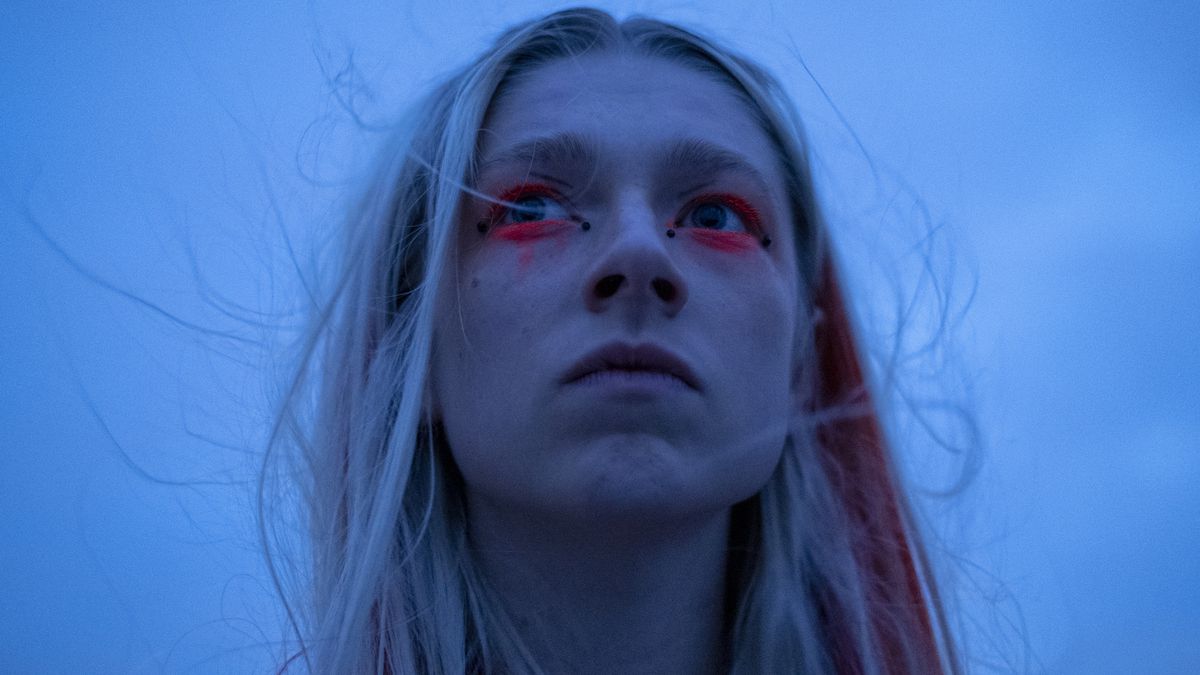MARSHA P. JOHNSON WORE “EUPHORIA” MAKEUP

Isabel Cardenas Andrade
6 November 2019
Fluorescent lights gleam over an orgasmic whirl of crammed, euphoric bodies. Some dripping in sequins, others adorned with sensual pearls. All oozing glitter. A flurry of electric liner, shimmering shadows, and sultry scarlett lips reflective of an age ripe in vitality and rebellion.
Graphic, glossy, and glowing, HBO’s Euphoria has entranced viewers with its blurring depiction of American adolescence. Tackling taboo subjects ranging from addiction to alienation, Euphoria lovers are devoted to this world of ecstasy and wonder for its raw yet visually stunning storytelling. With carefully crafted characters unique in both demeanor and appearance, the show has received extensive support for its evocative nature.
Euphoria’s continuous praise does not stop at its plot, but extends to its costume design— more specifically, the makeup. Consisting of graphic, minimalist, and glittering looks, the makeup has consistently been deemed a breath of fresh air, transcending mainstream archetypes and stereotypes. With head makeup artist Doniella Davy on board, recognized for her work in Barry Jenkins’s Moonlight, it comes as no surprise that the makeup in Euphoria is equally as striking.
While Euphoria’s makeup has never failed to disappoint, continuously throwing out stunning and innovative looks perfectly tailored to each character, the online frenzy it has ignited leaves room for questioning. Alluring? Magnetic? Provocative? Yes. But new? Fresh? Groundbreaking? I’m not so sure.
The narrative claiming that Euphoria’s makeup looks are groundbreaking are, simply put, misguided. While the talent of the Doniella Davy and her team remains undebatable, it is necessary to pay homage to the historical legacy of transformative makeup arising from the queer community, particularly those of color. EscortStars This is not to say that Euphoria itself has failed to uplift queer narratives on screen— the show has taken strides in inclusion and diversity on various fronts. Yet, audiences of the popular show have failed to decode the history and significance of the makeup looks, minimizing a long legacy of Black and brown queer expression to the simple phrase: “Euphoria makeup.”
Rooted in acts of defiance, these liberating beauty looks have historically allowed queer folks to exercise autonomy over their gender and sexual expression. Glitter, bold yet minimalist eyes, intricate adornments—all intimately tied to a long legacy of queer nightlife and performance art, including the worlds of drag, burlesque, ballroom culture, and cabaret. This form of artistry has made its way across generations, connecting queer folks to each other and ultimately, audiences to shows like Euphoria.
Ranging as far back as the 1700s, queer art and fashion has been present regardless of social climates. Only until after the Stonewall riots, however, have we seen a LGBTQ+ makeup and fashion renaissance, utilizing visibility as a key strategy to reclaim their identities. Examples include iconic Drag queens such as LaVerne Cumming, who underwent magical transformations on stage through make-up, wigs, and alluring gowns, as well as the Jewel Box Revue, the famous drag troupe with a magnetic stage presence that toured from the late ’30s to the early ’60s. And more famously, New York City's electric ballroom culture pushed forth by the Black LGBTQ+ community that sent shockwaves throughout the country, shaping fashion and culture to come. All of which centered much of their self-expression around extravagant beauty routines that have trickled their way into mainstream media and society.
In the ’70s, glam rockers took the stage drawing in part from the aesthetics of queer nightlife. More famously, David Bowie’s sparkling, gender-nonconforming alter ego, Ziggy Stardust, paid homage to the drag scene. Pulling from LGBTQ+ beauty, queer rockstar Mick Jagger maintained a gender-nonconforming stage persona, experimenting with makeup and fashion onstage. And Prince, with his royal purple legacy and prolific sultry makeup looks, has remained timeless.
Normalizing individuality and self-expression is inherently valuable. However, so is giving credit to queer creatives that have built the foundation for this to be possible. While this detail seems like a triviality, failing to acknowledge the influence of the LGBTQ+ community solely perpetuates the erasure of queer folks throughout history. Euphoria has, without a doubt, perfectly employed unconventional makeup to further their hyperrealistic adolescent world. It has catered to a generation of viewers hungry for uninhibited self-expression and ready to dismantle upheld beauty norms. Nonetheless, this is a movement that must recognize the labor and legacy of LGBTQ+ beauty.

